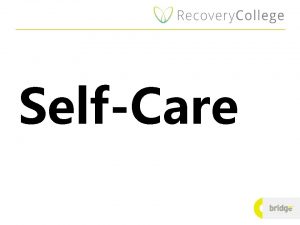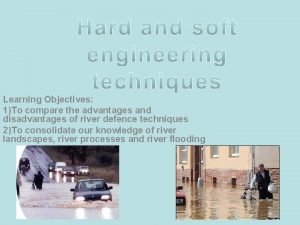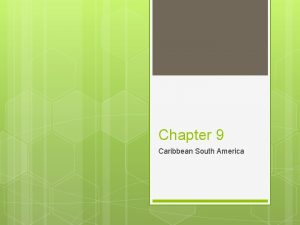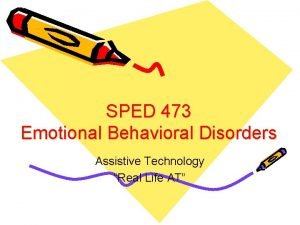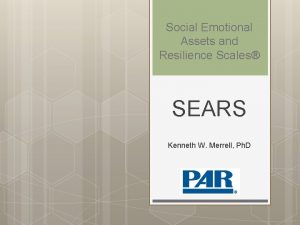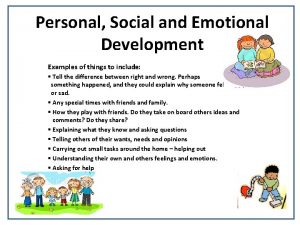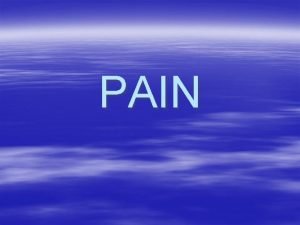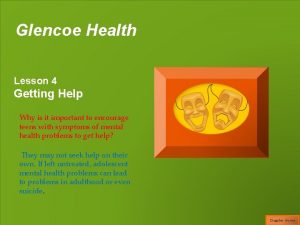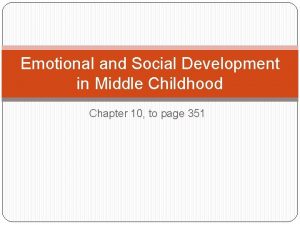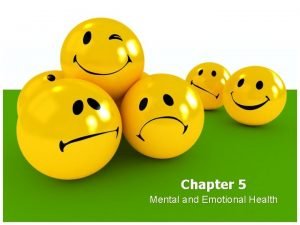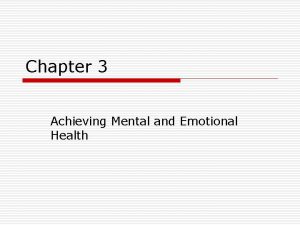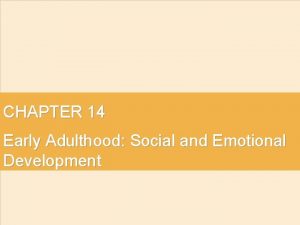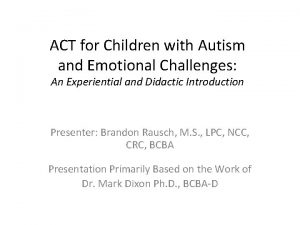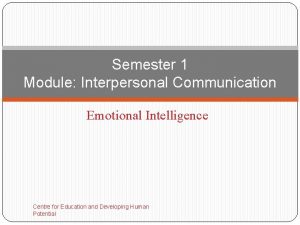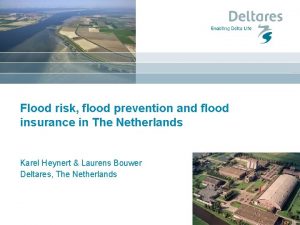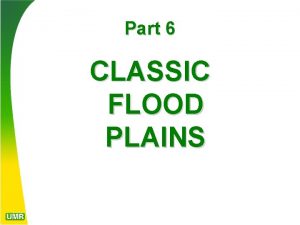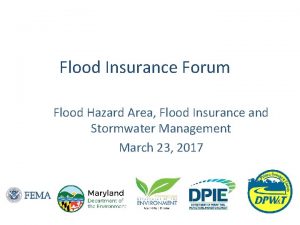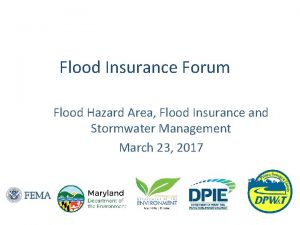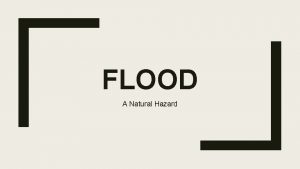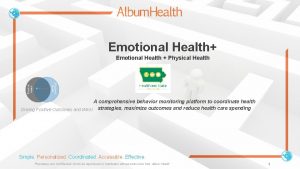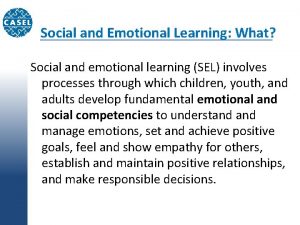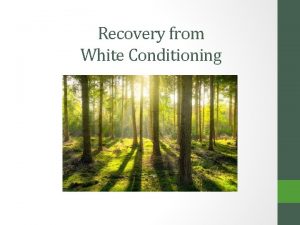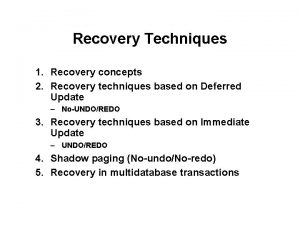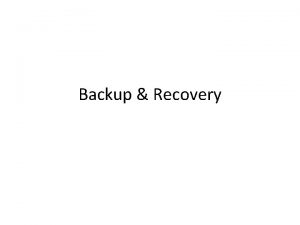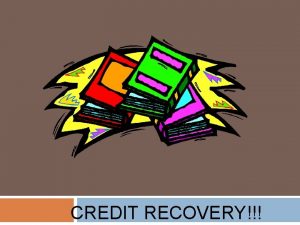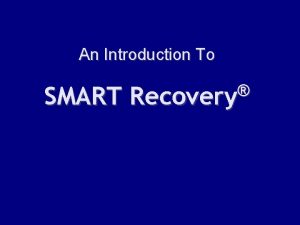Flood Recovery Flood Recovery is physical emotional and






















- Slides: 22

Flood Recovery

Flood Recovery is physical, emotional and spiritual care of disaster-affected persons

Flood Recovery is removal of possessions

Flood Recovery is water and mud removal

Flood Recovery is interior demolition to open enclosed spaces

Flood Recovery is removal of wet insulation and water filled ductwork from crawl space

Getting started • Be at the correct address • Explain flood recovery to owner • Explain hazards of mold from water and mud between walls • Have the owner sign a work order describing the work to be done • Be sensitive to the homeowner’s loss • Be sensitive while working, the damaged and destroyed property is their life and home • Be a source of hope

Removing Possessions • Dispose of mattresses and upholstered items • Dispose of all water absorbing items, including furniture • Furniture made of solid wood or non-absorbing materials may be conserved. Such items must be disinfected with dilute bleach (one cup of bleach diluted with water to one gallon). • Be sensitive to homeowner’s loss as items are removed from home

Interior demolition 1 • Cut walls 12 inches above flood level or 12 inches above insulation wick line, whichever is higher • Remove insulation to 12 inches above wick line • Remove floor coverings to expose sub-floor • Remove wet insulation from crawl space • Remove wet/contaminated duct work

Interior demolition 2 • Remove kitchen cabinets if flood waters have been in walls behind cabinets or in space under cabinets. Conserve cabinets if component materials are not absorbing water. • Remove bathroom fixtures, if flood waters have been in the walls behind fixtures or beneath them. Conserve fixtures made of nonabsorbing materials

Residence decontamination • Pressure wash entire area beginning at flood level. Wear PPE -rainsuit • Use mops, squeegees, brooms, and wet-vacuums to eliminate excess water • Spray disinfectant over entire area, beginning at flood level. Use garden sprayer. Wear PPE-full face respirator with multi-gas filters when using chlorine bleach • Disinfect with dilute bleach (one cup of bleach with water to one gallon of water) or other approved disinfectant

Pumping water from basements • Avoid collapse of basement walls caused by too rapidly pumping water out • Pump 2 feet of water from basement and wait for 24 hours • If water has not risen, pump another two feet and wait 24 hours. • Repeat daily, as long as water does not rise • If water rises during 24 hours, wait longer before further pumping

• Safety first Safety 1 • Know your limits • Monitor your condition • Moderate work when fatigued • When fatigued or taking medications that induce drowsiness do not work on machinery or use power tools • Work in pairs or part as a group

• Assume fallen electrical lines are live Safety 2 • Assume fallen electrical lines are receiving power from home generators • Turn all utilities off • Open windows and doors for ventilation • Before throwing debris (particularly out a window or door) check for location of other workers

Safety 3 • Never operate gas powered equipment indoors

• Sharp objects Hazards • Dust and dust from LEAD PAINT • MOLD • Hazardous materials • Power lines • Leaking natural or LP gas • High water • Fire Hazards • Unstable structures • Waste/sewage contamination • Snakes, spiders, alligators, other animals

PPE 1 (Personal Protective Equipment) • Hard hat • Goggles/safety glasses • Whistle • Work gloves • Disposable overalls or a change of clothes at the end of the workday are a must. • Shoes with toe protection Always wear your PPE • Over the shoe rubber boots • Heavy duty rubber gloves • Hand sanitizer

PPE 2 (Personal Protective Equipment) • Respirator • Dust or Mold (less than 10 sq ft)- face mask, N 95 rating • Mold (greater than 10 sq ft)– full face respirator with particulate filter and charcoal filter for nuisance gases • Chlorine bleach - full face respirator with multi-gas (chlorine) filter

Personal Decontamination • Decontaminate gloves and footwear at the end of each day • Do not wear work footwear in living quarters • Do not wear dirty clothes or work footwear in a vehicle • Decontaminate tools • Keep clean clothes in plastic bag at worksite • Take regular showers and dress in clean clothes • Place contaminated clothes in plastic bag and submit to decontaminating laundry

Because of LEAD-based paint in pre-1978 homes, during tear-out work, minimize dust generation and wear a N 95 mask and disposable overalls, or change clothes before riding in a vehicle or entering the volunteer living quarters.

What about mold? People with asthma or other chronic respiratory conditions should not work inside flooded homes • Mold is a health hazard • Mold is always present, pre and post flood • Mold grows in homes after flooding, particularly weeks after the flood • Our clean-up purpose is to reduce the possibility of mold growth • PPE requirements-disposable overalls or clothing change; N 95 respirator for less than 10 sq ft of mold

 Physical emotional mental spiritual
Physical emotional mental spiritual Physical rate fences example
Physical rate fences example Physical fitness test grade 9
Physical fitness test grade 9 Advantages and disadvantages of hard engineering
Advantages and disadvantages of hard engineering Why do the llanos in colombia and venezuela flood easily
Why do the llanos in colombia and venezuela flood easily The intentional use of unfriendly or offensive behavior
The intentional use of unfriendly or offensive behavior Assistive technology for emotional and behavioral disorders
Assistive technology for emotional and behavioral disorders Social emotional assets and resilience scales pdf
Social emotional assets and resilience scales pdf Fictional character names
Fictional character names Unpleasant sensory and emotional experience
Unpleasant sensory and emotional experience Slidetodoc. com
Slidetodoc. com Chapter 5 lesson 4 getting help answer key
Chapter 5 lesson 4 getting help answer key Emotional health and wellbeing framework
Emotional health and wellbeing framework Emotional development in middle childhood
Emotional development in middle childhood Social development for middle adulthood
Social development for middle adulthood Unit 2 mental and emotional health
Unit 2 mental and emotional health Chapter 5 mental and emotional problems
Chapter 5 mental and emotional problems Chapter 3 achieving mental and emotional health
Chapter 3 achieving mental and emotional health Social and emotional development in adulthood
Social and emotional development in adulthood Attitude and emotional intelligence
Attitude and emotional intelligence Act for children with autism and emotional challenges
Act for children with autism and emotional challenges Achieving mental and emotional health
Achieving mental and emotional health Interpersonal communication and emotional intelligence
Interpersonal communication and emotional intelligence
